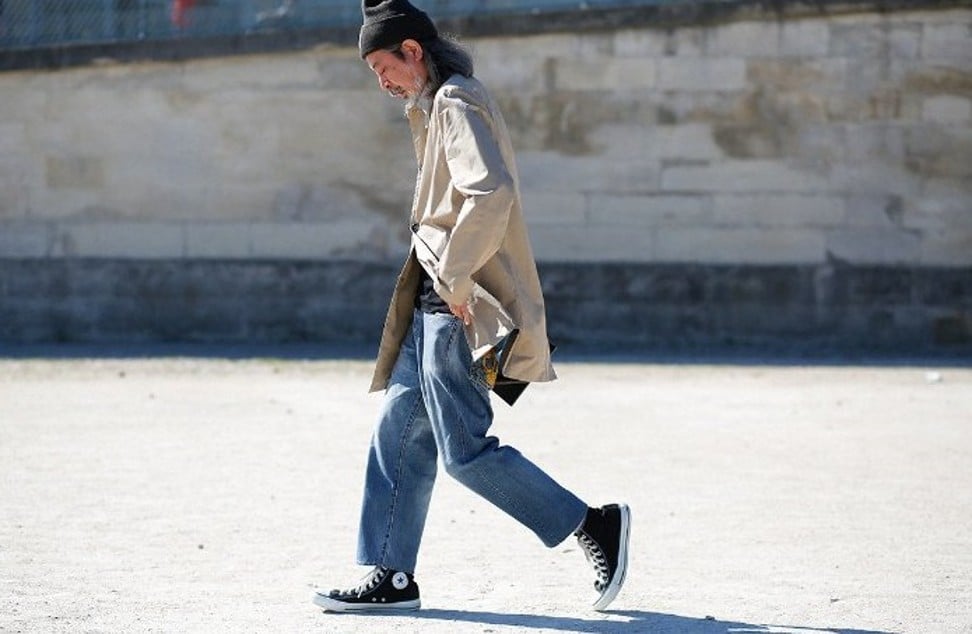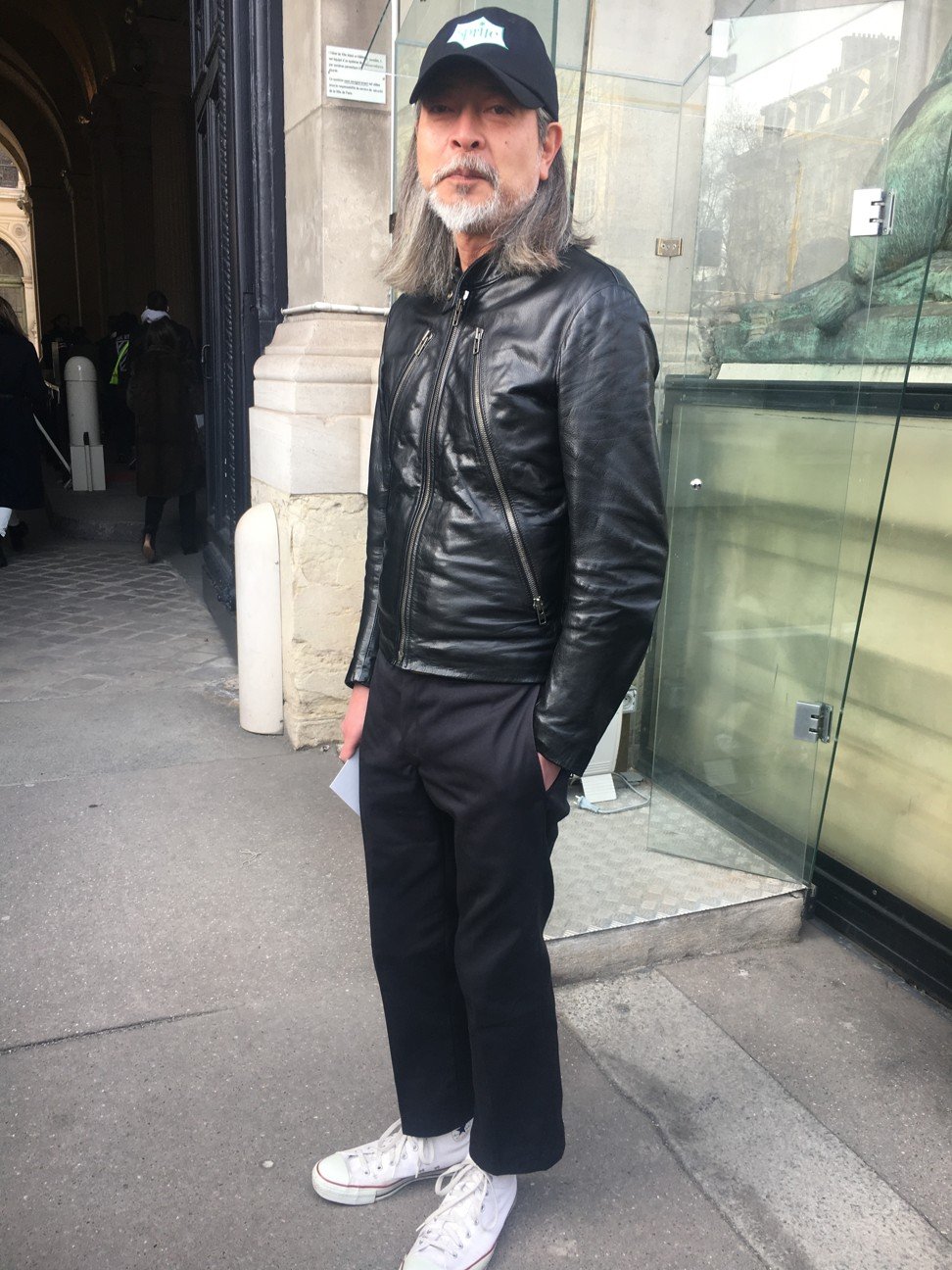For designers and creative professionals, it’s no secret that Japan has long been a hotbed of inspiration for men’s style. Japanese men’s affinity for fashion is well rooted in history, according to Vogue Japan and GQ Japan creative director Gene Krell.
“Historically, men often wore women’s clothes as they were a sign of wealth and power. The profound glory of the colours, shapes, and fabrication seemed aristocratic and they drew no distinctions in terms of gender,” he explains.
Senior-citizen street style in America’s Chinatowns celebrated in blog that could become a book
Motofumi Poggy Kogi, a buyer for United Arrows & Sons and sartorial street-style favourite, agrees.
“Japanese men have a different perspective for dressing. For example, there would be resistance for many men to wear feminine clothes in other countries. However, in Japan, men are more free to wear what they want.
“From Oda Nobunaga to kabuki actors, where women’s roles were played by male actors in the Edo period, there has been an artistic culture for men wearing female clothes,” he says. “Now in big cities, more people are mixing both men’s and women’s clothes as long as the clothes look good. In that sense, Japanese men are very creative in fashion.”
The way fashion information is widely spread in Japan, such as in magazines, has long allowed Japanese men to experience different styles over the years, that they have perfected on their own.
“For decades, the amount of information in magazines has given Japanese men a lot of time to study, try, and perfect a lot of things, including trends from abroad,” says Philippe Terrien, who runs Tokyo-based PR agency TFC, which takes care of international brands such as Dries Van Noten, Etudes Studio, and Courreges in Japan.
Here’s a snapshot of a few of our favourite stylish gents in Tokyo.
1. The vintage mix-master
Who: A product of 16 generations of artisans, the stylist, photographer, and creative director Takashi Kumagai started his career in fashion as a student of ESMOD in Paris. He moved back to Japan to open a “street-casual” store that sold American brands like Nike and Ralph Lauren.
Japan has to be more humble and go back to craftsmanship.
Takashi Kumagai
Ametora or “American traditional” is a trend that started in 1980s Japan. It began as preppy, classic Ivy League clothing – a mix of fisherman’s jumpers, Brooks Brothers jackets, and Levi’s 501s – which has since evolved to include hip-hop and California surfer style.
It’s the latter that Kumagai is known for, and this influence is evident in his select shop in Harajuku, Ciao Panic Country Mall, and his own menswear line, Naissance. At Naissance, vintage is reworked to create parkas from military khakis, waistcoats from sheepskin jackets, or patchwork pants from old denim and workwear.
Why Japanese men are stylish: “I consider Japan an advanced country in terms of trends in fashion, but Japan has to be more humble and go back to craftsmanship.”
2. The elegant maestro
Who: Yoshihito Kinoshita is the head of suit company Sharon, whose shop sits in the heart of Tokyo’s fashion district, Aoyama. With a personal wardrobe almost completely furnished by famed tailoring house La Vera Sartoria Napoletana, Kinoshita’s personal style is impeccably elegant.
“Since I visit La Vera Sartoria Napoletana a lot, I get endless inspiration from their craftsmen,” he says. Sharon itself has been established as the go-to for men in Japan looking to have elegantly cut Italian suits and Fedeli cashmere.
Why street style is over, in the eyes of one of its original stars, and the menswear trends he’s seeing in Hong Kong and Japan
Why Japanese men are stylish: “Since Japan is an island, we are in an environment that allows us to create our own unique style. While it was easy for other fashion cultures to come in and out, we are geographically apart from the Western conservative fashion culture.
“We started to understand fashion in our own way, which resulted in people outside Japan seeing us as ‘creatives’. Sometimes, Japan’s island conditions make it harder for us to remind ourselves of what is right.
“At Sharon, we think that being conservative is the core value of fashion, and we would like to share this value with more Japanese people.”
3. The discreet rebel
Who: Shunichi Mugita is the fashion director for design magazine Quotation. He started his career at 24 as a writer for Women’s Wear Daily almost 30 years ago, and has been attending fashion shows since then. T-shirts, vintage Yohji Yamamoto, denim, and Converse All-Stars are his wardrobe mainstays.
“I was writing for the longest time, and attending Milan and Paris shows for the longest time, but I don’t look at men’s magazines. It’s not interesting for me. I like clothes that are basic and don’t stand out,” Mugita says.
Still, his “basic” style has a nonconformist streak, seen when he pairs a Prada coat with a tatty Coca-Cola merchandise cap. “I’m sure people think, ‘That guy is so stupid with his Coca-Cola hat’, but that’s why I like it,” he says, laughing.
Why Japanese men are stylish: “[For] some men, when they wear clothes, it’s like looking at a manual. All the right things that you have to do, they do, and for the Japanese, it appears naturally now because they’ve had many years to learn.
Evisu makes grand Hong Kong entrance with temple of denim
“I don’t own one pair of Levi’s. On the contrary, I’m a fan of Japanese brand Evisu. The company has had its ups and downs. Sometimes it’s very fashionable, sometimes it’s not. I like Evisu when it’s at the bottom of the wave – that’s when I buy it.
“Evisu made a parody of Levi’s with the white paint on the back pocket instead of the classic stitching – I love that.”
4. The street kid
Who: “Often people ask me, ‘What is Maison Kitsune? What is the DNA?’ It’s just our lifestyle, it’s what we see and live every day,” explains Paris-born Japanese Masaya Kuroki, who co-founded Maison Kitsune together with Gildas Loaec. Kitsune started as a record company in 2002 that eventually branched out into fashion.
I can’t say 100 per cent of Japanese men are the most stylish, but maybe they’re the most curious, the most adventurous.
Masaya Kuroki
In 2014, Masaya moved from Paris to Japan, where Maison Kitsune has a shop and an offshoot, Cafe Kitsune, in Aoyama. When it comes to personal style, Kuroki sticks to his staples.
“When I’m in LA, I buy three of the same jumper or denim jacket. Vintage denim jackets – it’s something I’m crazy about. You can’t really explain it. It’s all about feeling and how it looks because you don’t know what life [the jacket had] before [you bought it], and I just love them so I keep buying them!
Why street style is over, in the eyes of one of its original stars, and the menswear trends he’s seeing in Hong Kong and Japan
“I’m definitely taking less care [with] everyday styling. It’s strange because it always comes up, like, ‘How do you pick your style of the day?’” Kuroki says with a laugh. “Well, it’s automatic! It’s a T-shirt and jumper and crew neck.”
Why Japanese men are stylish: “Japanese men are not afraid of wearing female accessories. I can’t say 100 per cent of Japanese men are the most stylish and most qualified, but maybe they’re the most curious, the most adventurous.
“Very stylish Japanese men spend a lot of money on their appearance but it’s really coming up from the magazines. They wear what’s on the magazines, down to the detail of the socks, the shoelaces. They will study and do the research of the trends of the season.”
5. The fashion plate
Who: Stylist Tomoki Sukezane started his career at the iconic Japanese men’s magazine Popeye. Sukezane was urged by another stylist he met in Kyoto, where he was originally, to join the magazine in its early days.
“I always wanted to work in fashion and at the time, the only job where you could be dedicated to fashion was to be a stylist, so I became one,” he says.
Today, Sukezane is known for his tailored dandy-esque style and his curated take on the latest trends – for this, he has garnered his own cult following, which he turnsinto product collaborations with international brands.
Why Japanese men are stylish: “There is a samurai attitude in Japan where everything is internalised and maybe because of that, an environment of [expression through fashion] was created.
“So many times when I travelled all over Europe in the ’90s, I was asked if I was gay because I was wearing so many designer brands which were not the norm in Europe at the time. It’s changing recently with more people daring to wear fashion now, but for Japan, since the ’90s, there was already an environment where people were free to wear what they wanted. That’s why Japan is more advanced in fashion.”









No comments:
Post a Comment